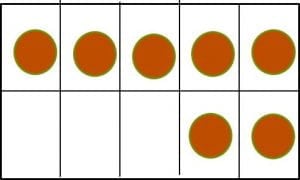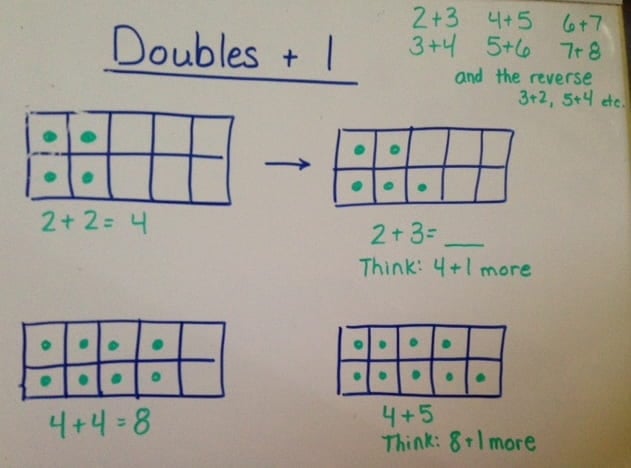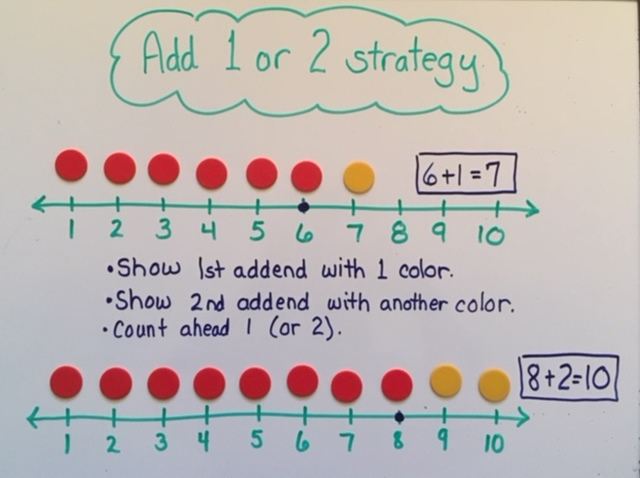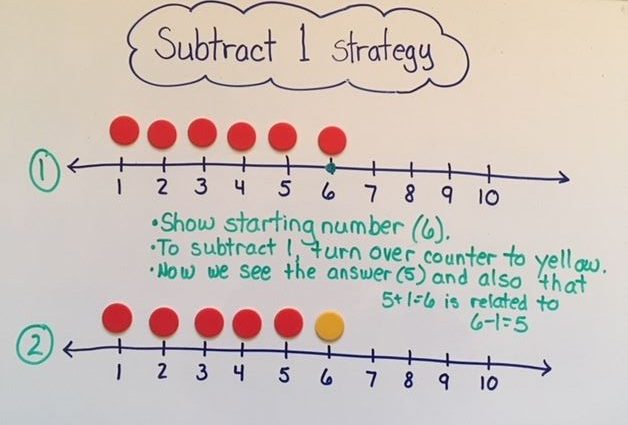by C. Elkins, OK Math and Reading Lady
Last week’s focus was on using ten frames to help with students’ number sense and conceptual development of number bonds for amounts 1-10.  This post will feature ways to use ten frames to enhance students’ understanding of addition and subtraction. Look for freebies and a video!
This post will feature ways to use ten frames to enhance students’ understanding of addition and subtraction. Look for freebies and a video!
There are many addition and subtraction strategies to help students memorize the basic facts such as these below. The ten frame is a very good tool for students of all grade levels to make these strategies more concrete and visual. I will focus on some of these today.
- add or take away 1 (or 2)
- doubles, near doubles
- facts of 10
- make a ten
- add or sub. 10
- add or sub. 9
- add or sub. tens and ones
Doubles and near doubles (doubles +1, -1, +2, or -2): If the doubles are memorized, then problems near doubles can be solved strategically.
- Show a doubles fact on a single ten frame (for up to 5 + 5). Use a double ten-frame template for 6 + 6 and beyond.
- With the same doubles fact showing, show a near doubles problem. This should help students see that the answer is just one or two more or less.
- Repeat with other examples.
- Help student identify what a doubles + 1 more (or less) problem looks like. They often have a misconception there should be a 1 in the problem. Make sure they can explain where the “1” does come from. Examples: 7 + 8, 10+11, 24+25, 15 +16, etc.
- For subtraction, start with the doubles problem showing and turn over the 2-color counters or remove them.
Facts of 10: These are important to grasp for higher level addition / subtraction problems as well as rounding concepts. Continue reading





